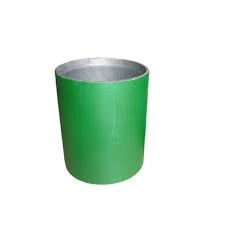- Afrikaans
- Albanian
- Amharic
- Arabic
- Armenian
- Azerbaijani
- Basque
- Belarusian
- Bengali
- Bosnian
- Bulgarian
- Catalan
- Cebuano
- Corsican
- Croatian
- Czech
- Danish
- Dutch
- English
- Esperanto
- Estonian
- Finnish
- French
- Frisian
- Galician
- Georgian
- German
- Greek
- Gujarati
- Haitian Creole
- hausa
- hawaiian
- Hebrew
- Hindi
- Miao
- Hungarian
- Icelandic
- igbo
- Indonesian
- irish
- Italian
- Japanese
- Javanese
- Kannada
- kazakh
- Khmer
- Rwandese
- Korean
- Kurdish
- Kyrgyz
- Lao
- Latin
- Latvian
- Lithuanian
- Luxembourgish
- Macedonian
- Malgashi
- Malay
- Malayalam
- Maltese
- Maori
- Marathi
- Mongolian
- Myanmar
- Nepali
- Norwegian
- Norwegian
- Occitan
- Pashto
- Persian
- Polish
- Portuguese
- Punjabi
- Romanian
- Russian
- Samoan
- Scottish Gaelic
- Serbian
- Sesotho
- Shona
- Sindhi
- Sinhala
- Slovak
- Slovenian
- Somali
- Spanish
- Sundanese
- Swahili
- Swedish
- Tagalog
- Tajik
- Tamil
- Tatar
- Telugu
- Thai
- Turkish
- Turkmen
- Ukrainian
- Urdu
- Uighur
- Uzbek
- Vietnamese
- Welsh
- Bantu
- Yiddish
- Yoruba
- Zulu
tubing and casing
Understanding Tubing and Casing in Oil and Gas Operations
In the world of oil and gas extraction, tubing and casing are critical components that ensure the efficient and safe extraction of hydrocarbons. Despite their foundational roles, many people outside of the industry may not fully grasp their importance. In this article, we will delve into what tubing and casing are, their functions, and their significance in drilling operations.
What is Casing?
Casing refers to the series of steel pipes that are installed in a wellbore to provide structural integrity and prevent the walls of the well from collapsing. During the drilling process, a well is often drilled through various geological formations, and a casing string is inserted to support the borehole. This casing not only stabilizes the well but also isolates different pressure zones and formations, preventing fluid from flowing between them.
The casing process begins with drilling a hole, often referred to as the borehole, to the desired depth. Once the hole is drilled, it is lined with casing that is cemented in place, creating a secure barrier. The casing is typically constructed from durable materials like carbon steel to withstand the immense pressures and corrosive environments found deep under the earth's surface.
What is Tubing?
Tubing, on the other hand, is a smaller-diameter pipe inserted into the wellbore after casing. Its primary function is to transport oil and gas from the reservoir to the surface. Tubing is specially designed to handle the pressure and chemical environments associated with the extraction of hydrocarbons. Unlike casing, which remains permanently fixed in the well to provide structural support, tubing can be removed and replaced as necessary during the production phase.
tubing and casing

The installation of tubing occurs after the well has been cased and completed. This step is crucial as it enables operators to control the flow of hydrocarbons, facilitating production or injecting fluids for enhanced recovery techniques. The selection of tubing size and grade is critical and is determined by factors such as the expected production rate and the characteristics of the reservoir.
The Importance of Tubing and Casing
Both tubing and casing play vital roles in maintaining the safety and efficiency of oil and gas extraction operations. Properly installed casing ensures that the wellbore remains stable, preventing costly collapses and leaks that could potentially harm the environment. Additionally, casing prevents groundwater contamination by creating barriers between different geological layers.
Tubing, meanwhile, is essential for optimizing production. With the appropriate tubing system, operators can maximize the flow rate of oil and gas, reduce the risk of well failures, and ensure the efficient operation of artificial lift systems when necessary.
Conclusion
In summary, tubing and casing are indispensable components of oil and gas well construction and operation. Casing provides the structural integrity needed for drilling, while tubing facilitates the transportation of hydrocarbons to the surface. Understanding their roles and importance allows for better planning, execution, and management of drilling operations, ultimately enhancing the safety and efficiency of hydrocarbon extraction. As the oil and gas industry continues to evolve, innovations in tubing and casing technologies will likely play a key role in meeting the world's energy demands sustainably.
-
Tubing Pup Joints: Essential Components for Oil and Gas OperationsNewsJul.10,2025
-
Pup Joints: Essential Components for Reliable Drilling OperationsNewsJul.10,2025
-
Pipe Couplings: Connecting Your World EfficientlyNewsJul.10,2025
-
Mastering Oilfield Operations with Quality Tubing and CasingNewsJul.10,2025
-
High-Quality Casing Couplings for Every NeedNewsJul.10,2025
-
Boost Your Drilling Efficiency with Premium Crossover Tools & Seating NipplesNewsJul.10,2025







